Like every other comic book fan with a pulse, I truly enjoyed last summer’s Avengers movie and nearly leapt out of my seat at the very end when (*spoiler*) THANOS showed up in the teaser. It’s Thanos, the “Mad God of Titan,” the man who courts Death, the … the …
And then I realized – as excited as I was to see Thanos in movie form, I haven’t read a heckuva lot of comics he’s been in. Sure, I was familiar with the “Infinity Gauntlet,” and remember flipping through the bulk of that as a kid. But being that I was such a hardcore, laser-focused Spider-Man guy, a hero who spends the bulk of his crime-fighting time picking off street-level criminals rather than fighting cosmic demigods, my bookshelf didn’t have a lot of Thanos on it.
I immediately set out to rectify that, getting a copy of Gauntlet to re-read as an adult, along with some early-90s issues of Silver Surfer where Thanos appeared. Of course, as I was reading more and more of these graphic novels and storylines, I noticed the higher profile (and more entertaining) ones were all written by Jim Starlin. So from there, I started exploring some old school 70s Starlin comics, including his run on Warlock (which featured Thanos). While reading through the Marvel Essential Warlock collection, I stumbled on Marvel Two-in-One Annual #2.
Hey, that’s Thanos picking up Spider-Man and throwing him at the Thing! THAT certainly got my attention.
The Two-in-One annual is the second half of one of the more famous Avengers storylines from the late 1970s, where Thanos is trying to impress his mistress Death by collecting the powers of the Cosmic Cube and Warlock’s soul gem in order to destroy the sun (and by proxy, the solar system that surrounds it). In the first part of the story, which takes place in Avengers Annual #7, Thanos captures the Avengers and kills Warlock. For the second part of the story, it’s up to Spider-Man and the Thing to save the Avengers, and the entire universe.
Given how Spider-Man is typically treated like an afterthought during the big crossover “events” of today, I was half-expecting his involvement with Thanos to be strictly obligatory and that some combination of the Thing, Fantastic Four and the Avengers would ultimately save the day. Never in a hundred years did I expect that Spider-Man and his trademark pluck and never-say-die spirit would actually save the universe and help lead to the defeat of someone as omnipotent as Thanos. Granted, as someone who didn’t write Spider-Man with any regularity, Starlin took a somewhat circuitous route to get Spidey to the point where he stands triumphant, but the fact remains: Spider-Man is the hero of this comic and was able to succeed in a way where “Earth’s Mightiest Heroes” failed.
The “circuitous route” I was referring to comes immediately after Spider-Man and the Thing arrive on Thanos’ space base and the Titan’s army immediately takes down the Thing without breaking a sweat. Spidey has a moment of uncharacteristic panic where he starts to openly question what he’s even doing out in space in the first place. He goes to leave the base, leaving Thanos to be the “Avenger’s problem,” before realizing that if Thanos gets his way, there’s not going to be an Earth to return to (nor does he know how to fly Thing’s jet). That’s when Spider-Man rejoins the fight.
I’m assuming Starlin was trying to create a situation that mirrored the first (and most important) time Spider-Man ever abdicated his responsibility, when he let a burglar run by him in Amazing Fantasy #15, leaving it to be the police’s “problem.” Of course, that burglar would go on to be the killer of Peter’s Uncle Ben, leading to the iconic mantra, “with great power, comes great responsibility.”
My problem with Starlin’s use of the analogy here is the fact that by the time this comic was published (1977), it was pretty well established that Spider-Man would always value the “responsible” choice over the selfish one. He was still a flawed hero, and far from a saint, but every subsequent time I read this Two-in-One annual, I find Starlin’s initial characterization to be jarring. Yes, Spider-Man did wake up and came back to do the right thing. But he certainly debated that decision long enough – more than I ever remember him debating forgoing his responsibility.
Fortunately, Starlin would go on to stick the landing in a major way, especially if you’re a big-time Spider-Man fan. Once Spidey returns to the fray, he finds himself outnumbered and overpowered and realizes the only hero within earshot who has the strength to match-up with Thanos is Thor (who’s suspended in animation with the rest of the Avengers). With no real options left at his disposal, Spider-Man improvises a unique way to save the day. He throws his body at the containment tank where the Avengers are being held, breaking it open and unleashing them on Thanos.
I. Love. This. Moment. Spider-Man wasting his body in order to free the Avengers is such a definitive moment for the character. It’s one of those scenes that I would love to have a copy of in my wallet that I could bust out whenever somebody asked me, “why do you like Spider-Man so much?” Yeah, all superheroes have a sense of duty and sacrifice and sometimes come up with unique ways to beat the bad guys and save the day, but Spider-Man has always had a special knack for theatrics. He clearly was no match for Thanos and absolutely needed the Avengers to do the dirty work for him, but with no tangible way to release them except to THROW HIS BODY AT A CONTAINMENT TANK, Spider-Man THROWS HIS BODY AT A CONTAINMENT TANK. In one snap decision, Spidey shows off his selflessness, ingenuity, and general loser-nature. I can’t think of a more perfect snapshot of what it means to be Spider-Man.
If that wasn’t enough, Spider-Man gets one more moment to shine in this story when he manages to release the Soul Gem from Thanos’ control, which temporarily resurrects Warlock. Warlock then lands the finishing blow on Thanos, using his immense cosmic powers to freeze the “Mad Titan” in stone, creating one of the most iconic Marvel comic panels from the 1970s.
What further elevates this comic for me is the fact that not only is it a great Spider-Man story, it’s also a great Thanos and Avengers story. For those who were intrigued by the Thanos Avengers cameo but wanted to know what the fuss was about (or who wanted to read up on some Thanos goodness before diving into Marvel’s “Infinity” event today, which is part of the reason why I decided to write about this issue today), the comic paints a pretty clear picture as to why Thanos is such a badass and is bound to create such enormous trouble for the Marvel universe if (when) he shows up for Avengers 3. The Thanos Quest and Infinity Gauntlet are probably the optimal comics to read if you’re trying to get a better view on the character’s layers and depth, but if you just enjoy the character for the sheer fact that he’s a dominant baddie with awesome powers, Marvel Two-in-One Annual #2 is a must-read.
All images from Marvel Two-in-One Annual #2: Jim Starlin & Josef Rubinsten. Special thanks to Bronze Age Babies for posting these images in this July 2013 post.

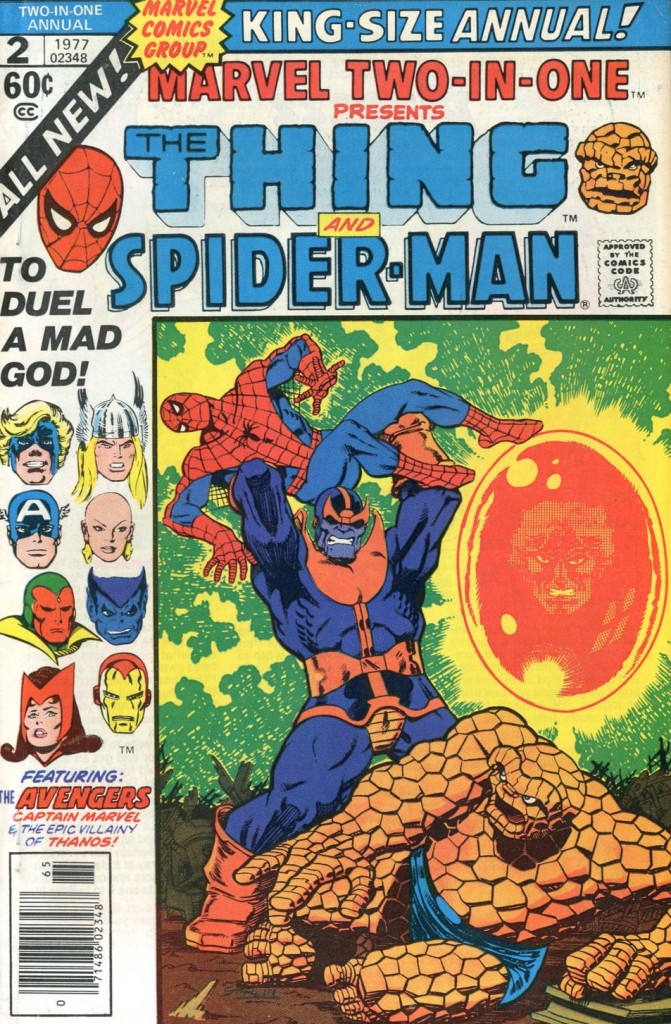
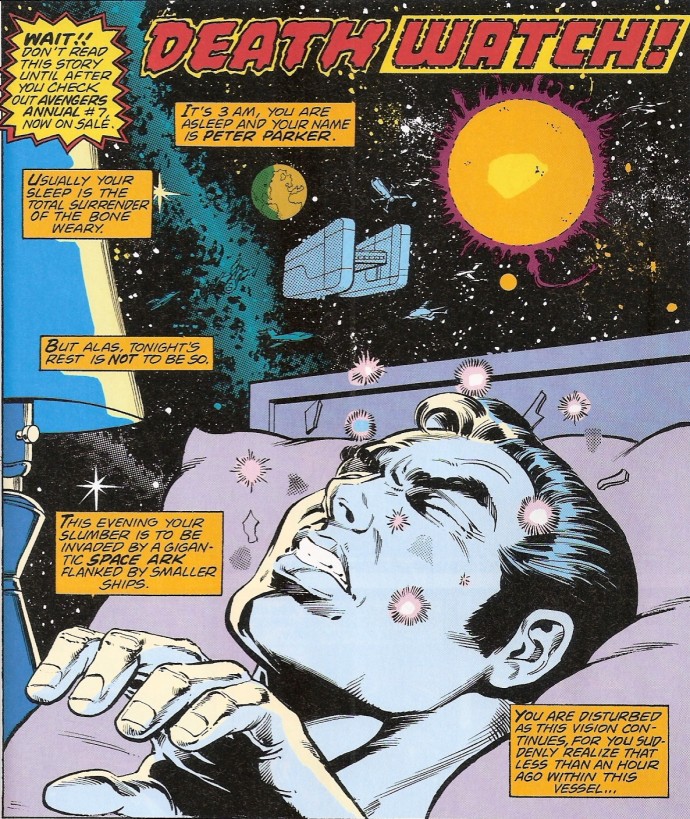
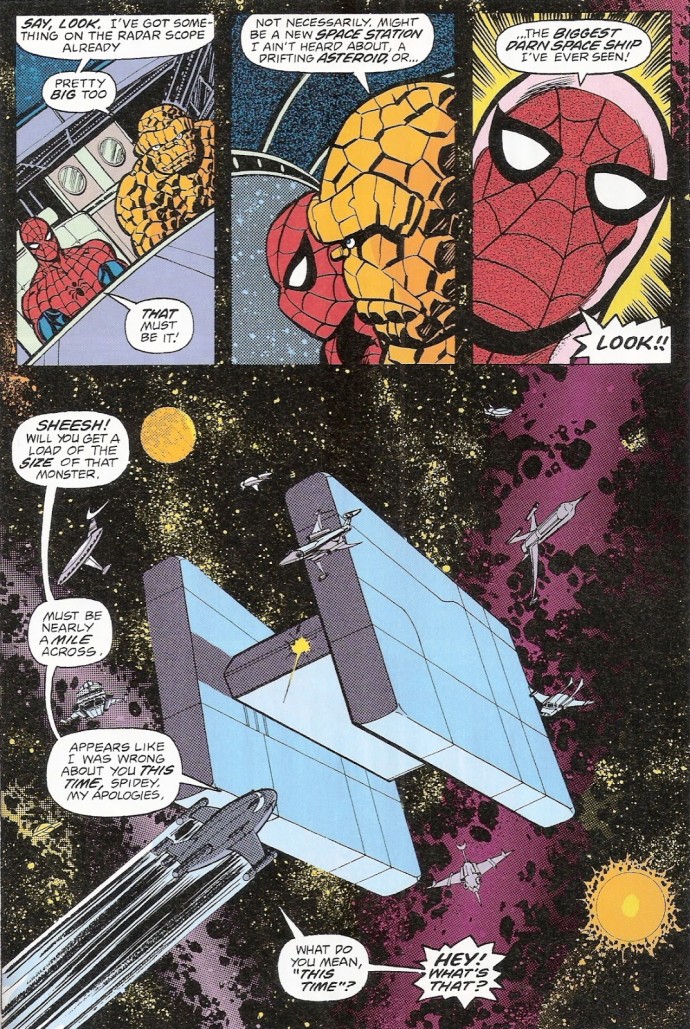
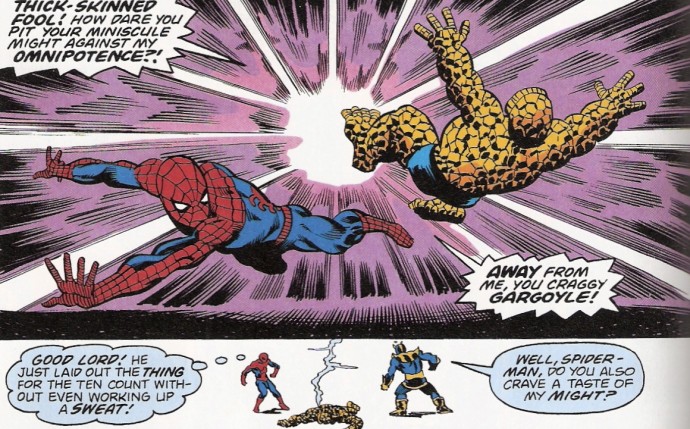
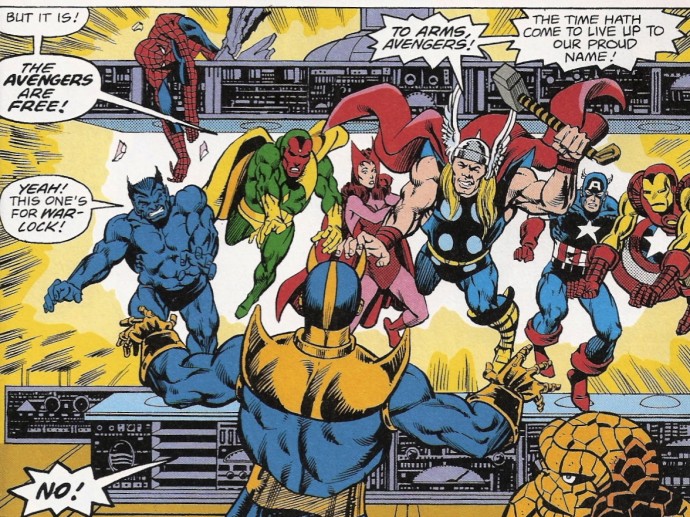
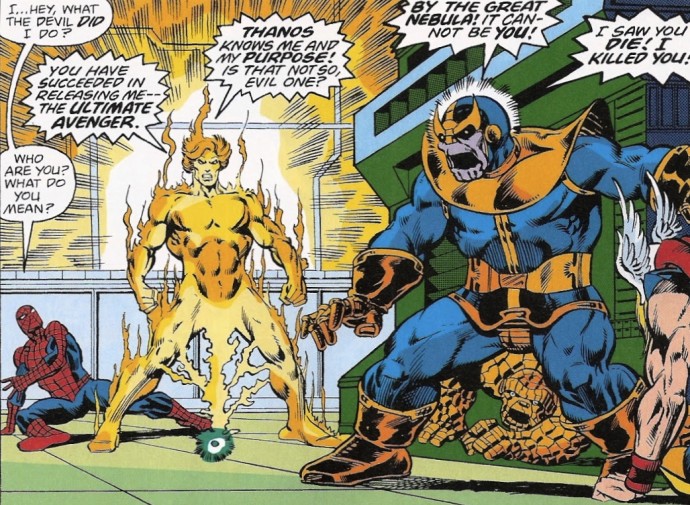
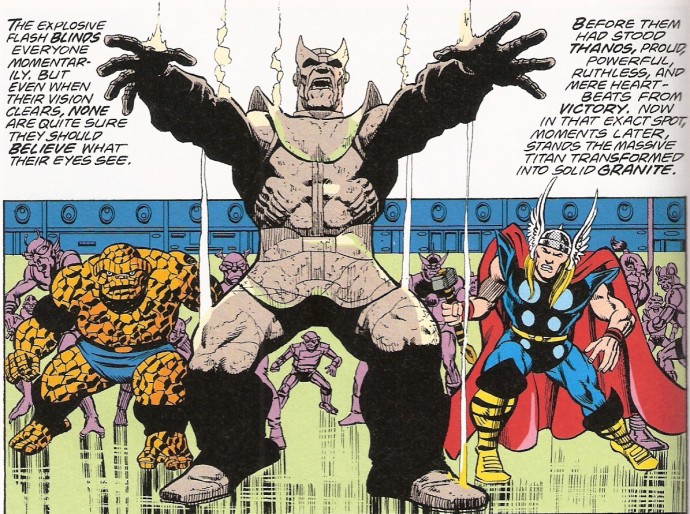


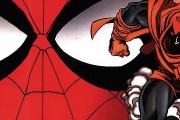
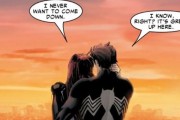
This two part story won an Eagle Award back in the day and is mentioned briefly in Josh Whedon’s commentary on the DVD/Blu-ray of THE AVENGERS.
Wonderful summation of a story that still resonates today, Mark. And, way to highlight Spider-Man’s greatness in it.
Thanks! It helps when the source material is a lot of fun and is generally universally revered. Now I have reason to plug in my Avengers Blu Ray again since I don’t remember Joss talking about this story.
I’m glad I found this I used this website on Facebook because everyone in the comments was trying to say that spider-man was in no way capable of even thinking about fighting thanos and this article helped a lot thanks.